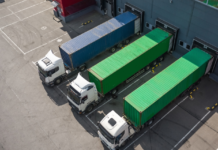The world is moving away from fossil fuels. That is not new news, and because of the Covid-19 lockdown, we have also gotten a glimpse into how superior the air quality would be if cars burning fossil fuels were to go off the roads. Even in a short time, the difference was startling.
To this end, many governments in Europe have set standards that will lead to improved air quality in cities and eventually lead to the greater adoption of electric cars. For example, Amsterdam is banning all diesel vehicles by 2030. Similarly, twenty-three other European cities will ban all diesel vehicles by 2030. In the immediate future, diesel is the boogeyman with harsh bans and restrictions on diesel vehicle emissions on the cards all over Europe.
This ban will be further extended to completely banning fossil fuel for vehicles in countries like the Netherlands by 2040. The implications of the world moving beyond fossil fuels are great not only for automobile manufactures and petroleum producing states but countries like Pakistan as well.
So when will demand for oil starting waning? There is no clear cut answer, but some estimates claim it will be somewhere between 2030 and 2050. That is the period when the demand for oil will peak in the world and will be followed by a decline. However, it is Europe and China that are at the forefront of this change, and demand will still remain strong in developing economies. It remains unclear when developing economies will fully transition to electric vehicles. For oil producing nations, whenever this transition occurs it will be a huge hit for their revenues, as about twenty one percent of the oil produced globally is eaten up by vehicles. Of course, this will not be a sudden reduction in revenues, but rather a gradual change over the next few decades.
The effects of the transition can already be seen. During Q1 of 2019 in Europe, the sales of diesel cars have dropped by almost one third, and the after sales market diesel cars sell for less than petrol ones do. In addition, key OPEC oil member investment strategies such as Saudi Arabia’s sovereign investment fund have invested in electric car companies such as Tesla and Lucid. Clearly, some middle eastern sovereign wealth fund investment managers recognize the potential of electric cars as well.
In Pakistan, currently 4 percent of the cars available on pakwheels.com in the used car market are hybrid cars. Of course, pakwheels.com is not representative of the overall Pakistan car market where many cars are not registered online for sale. But the figure does give an insight that the trend for more fuel efficient electric/hydrocarbon cars online is growing in Pakistan as it is in the rest of the world. To give an insight into the rest of the world, let’s consider the leading European online car marketplace, autoscout24.com.
The pakwheels.com hybrid percentage of available vehicles is similar to other online used car markets such as in Autoscout24.nl in the Netherlands, where about 5.8 percent of the cars offered are hybrids or electrics. Likewise, on Autoscout24.com the overall figure for hybrids and electrics used cars in Europe is about 3.2 percent of the total cars offered on the marketplace.
Pakistan has recently come out with an ambitious National Electric Vehicles Policy (NEVP) which is in line with many European targets. However, Pakistan, unlike Europe, is not gradually raising emission standards for vehicles. Pakistan still has the Euro 2 emission standard whereas Europe has progressed to the Euro 4 emission standard and will soon reach the Euro 6 emission standard. The higher the Euro emission standard number the less pollutants a vehicle releases. The Euro emission standards have been stricter for Diesel vehicles in Europe and have led to a reduction in demand for diesel vehicles. Second hand diesel vehicles now sell for less than petrol vehicles of similar makes in Europe.
This is primarily because older diesel vehicles with lower Euro emission ratings will no longer be able to operate on European roads in the coming few years. Hence, this has caused a shift in demand for new hybrid vehicles and petrol vehicles in Europe. But Pakistan is not gradually phasing out either diesel or petrol vehicles through a stepwise tightening of Emission standards. This is why the government’s aim of hitting 90% new vehicle sales being EV seems unlikely.
Moreover, there are already news reports that lobbyists in Pakistan are attempting to derail the implementation of the NEVP. This opposition to environmental regulation and taxation is not limited to the automobile sector, with a recent government report citing opposition to carbon taxation from industrial sectors in Pakistan for over the past decade.
In addition, in Pakistan, major auto manufacturers do not report the vehicles emission standards on their websites. Consider Toyota-indus.com, they do not report the emission standards for the Toyota Yaris and only have two hybrid vehicles on their website. This also holds true for other vehicle models listed on the Toyota-indus.com website.
Under the sustainability section of their website, they mention the environment and only discuss the process of manufacturing and the gas R-134a used in air conditioners, which is supposed to be more environmentally friendly than its predecessor. In contrast, on the UK website of Toyota, you receive the full Yaris environmental performance. This information difference on both websites reflects the importance the company perceives is for the environmental performance aspect in both markets as a result of regulation and consumer awareness.
If we look at the websites of the other two main players in the Pakistan market namely, Pak-Suzuki and Honda, they are no better. Pak-Suzuki provides information about four plantations and a beach cleaning exercise under their environment section, but nothing about the environmental performance of their vehicles. Honda Atlas provides some generic information about better environment and motorcycles but nothing related to specific emissions of the models listed on their website. Clearly, environmental performance is not an important factor for the big three auto manufacturers in Pakistan.
Moreover, from the consumer’s perspective, are the prices attractive for purchasing a new hybrid or electric vehicle? Currently they are not. The price of an 1800 CC Prius S is around 9.2 million rupees. Compare this price with a Toyota Corolla Altis 1800CC for about 3.9 million rupees. The price difference between both vehicles is more than 100% at 5.3 million rupees. 5.3 million rupees can fetch about 53000 liters of petrol which could get around 800,000 kilometers mileage on the Corolla. Clearly, the economic argument does not make sense of purchasing a new hybrid vehicle at the current prices.
If the government does intend to meet its targets, it might be better to raise the prices of existing non-electric and non-hybrid vehicles so that they lose their pricing advantage over hybrid/electric vehicles. Any vehicle customer given two alternatives between Hydrocarbon and hybrid/electric vehicles at similar price levels should choose hybrids/electrics because of the operational cost advantages (for example, better fuels consumption for hybrids and electricity being cheaper than hydrocarbons for electric vehicles). Another alternative could be to introduce steeper annual taxation on new non-hybrid and non-electric vehicles purchased thus driving up the cost of ownership of such vehicles.
Moreover, a part of the NEVP calls for existing CNG stations to serve as electric recharging stations that will provide electricity for vehicles at subsidized rates. This is all encouraging, however, in developed nations there normally is a dual recharging strategy for electric vehicles, either plugging up at home or at electric charging stations. This is where the problem arises. Given the amount of load shedding in Pakistan because of WAPDA’s massive circular debt, is it realistic to assume home and electric charging stations will receive uninterrupted supplies of electricity? And has the government accounted for whether the electricity power generation capacity will be able to cater to increased demand from electric vehicles?
Other issues that are of importance include what will happen to all the existing vehicles that will be replaced? Will the government buy them or will incentives be provided for switching to new vehicles? In Europe, where the switch from Diesel fuel to other fuels is underway, governments have offered buy-back programs for older cars and emission conversion kits. But even in Europe there is the concern that the switch to cleaner sources of energy will lead many middle-income families without vehicles as buying new vehicles is economically unfeasible for them. It might be too much of an economic burden for Pakistan to expect the same.
But there are other more serious implications for Pakistan from the global drive towards electrification. In the next twenty years when this huge shift towards vehicle electrification takes place, oil demand is predicted to be stable at current levels thanks to growth in developing economies which will make up for the lost sales from developed economies that have transitioned to electric vehicles.
In the same time frame (around 2040), oil dependent countries like Saudi Arabia will experience a 37% growth in their population. Coupled with more people and potentially declining oil markets will countries like Saudi Arabia be willing to employ the millions of Pakistanis who work there? And if there is a decline, what is the government’s vision for alternative employment? To the Saudi’s credit, they have a vision 2030 which is trying to wean them off oil. But where is our vision 2030 for when there are fewer oil sheikhs willing to employ our labour? These are questions that deserve serious consideration given our reliance on middle eastern remittances as a source of foreign exchange.
Overall, there is no avoiding electrification of vehicles in Pakistan and its impact on our broader economy. But Pakistan’s strategy needs to be expanded to already plan for the ramifications of electrification and the decline of fossil fuels. Furthermore, addressing pricing disparities between pure hydrocarbon and hybrids/electric vehicles needs to be addressed. If and only if such steps are taken then will Pakistan be prepared to face the new electric future.























Agreed with you Sir.
Unfortunately neither our Govt. nor the oposition parties have any vision for the future of Pakistan. The trend is to seek the answers of our all problems including military one with China.
Electric vehicles can be charged with solar panels better for environment and economy
Thanks Honorable Abrahim Zaka for your contribution to environment. What is most important Pakistan population is fond of their senior belongings like parents car, be sent for dent/paint restoration etc.,
Depreciation is an academic word, as people do not recycle the waste by converting their petrol autos to hybrid. By purchase of an OEM kit from Thailand of most Japanese cars and father/mothers car is revived for school children pick and drop. This old petrol convert to hybrid won’t last longer as the suspension, body, chasis are worn. It will not justify to invest in the abandoned car with 3 million Rupees, whereas no buyer will buy it.
The other option which I would recommend to convert to Solar/PV on the roof with and a Chinese new battery of equivalent rating would be used for some years if the body is not worn out. The battery of branded new Lithium Ion battery would be costly, and possible frauds are normal. It is very tricky to buy a new Chinese branded battery for a warranty which will make your solar dream work with no smoke, and gasoline.
IMPORTANT: This week the UN general Assembly in NY has a Digitisation working sessions. It is very imortant anyone who matters in Digitisation must participate with our country’s advocacy on Zoom virtual. The Ministry of Climate Change should consider this important to Digitise our automobile industry. Bicycle theft free. No motor cycle. All cars should be Digital in terms of emissions/fuel. Best wishes
Subsequent to my early submission Dr. Abrahim Zaka would like to add the Hydrogen/Fuel Cell kit conversion for public transport. Hyundai conducted trails on Fuel Cell which has zero emissions, Toyota Europe has conducted trails for fuel cell. I have researched for the avilability of Fuel Cell/Hydrogen gas. Suggest if you could reccomend to the new tender of public transport in Karachi for BRT or CEPEC be considered on fuel cell which I promise can change of our clouds sky will turn to BLUE instead of hazy. We have enormous pollution from fossil fuel, costs, and a punishment to our generations. It is time for Pakistan to give up all charity, aid, and free petrol.
There should be a clear policy incentive, for Zero Tax on Hydrogen/Fuel cell transport on all new transport. Yesterday fire to BRT Peshawer is quite revealing. I suggest the first to be targeted is to tell vendor to convert these buses to fuel cell/Hydrogen otherwise the penalties/fines for the fire, loss of revenue, and trust of passenger is enough. I would again suggest to please consider to the BRT Authorities to please change all the fuel to Fuel Cell. I have studied global sources, and availability in pakistan. Best wishes